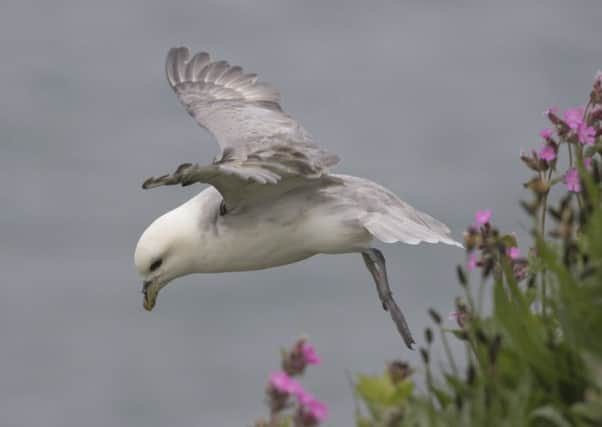Country & Coast: Foul protection tactics of an unfussy nesting bird


The name is an old Nordic word meaning “foul gull”, which may become wholly understandable to some who get within a few feet of a bird sitting tamely on a cliff top. It looks like a small gull, for sure, only with a tube-like nose that is suggestive of a sawn-off gun.
But should you get closer, as I once did on cliffs north of Filey, be prepared for an unpleasant explanation of the “foul” part of its name. The bird suddenly spews out a jet of the most putrid-smelling fish oil and half-digested food, which is specially manufactured from its diet as a defence against predators. Although it missed me, it can apparently hit the target from a couple of yards.
Advertisement
Hide AdAdvertisement
Hide AdThe fulmar may look gull-like but you won’t find it among the gulls in your identification guide book. It is a member of the petrel and shearwater tribe, birds which are among the hardiest on the planet and spend their non-breeding lives far out at sea. Part of this extended family is the albatross.
Fulmars are fairly common on the east coast from February to September and seem to be increasing their presence in Yorkshire, where they didn’t breed until the 1920s when two birds were found nesting at Bempton. However, before then fulmars was clearly familiar to Yorkshire trawlermen from their North Sea activities because they already knew them by another name, the mollihawk, which they must have learned from fishermen in Holland, who called them mollemokes, a compound of two Dutch words meaning foolish and gull.
The foolish bit is a reference to the fulmar’s habit of stupidly sitting tight on its single egg when, as happened a century ago, people in remote coastal areas killed them in huge numbers for meat and oil.
Away from coastal waters in winter, they are often found following ships. When I sailed from Hull to Iceland some years ago, our vessel never lost an escort party of around 20 or 30 fulmars once we had left the Shetlands. They are noted for their graceful, effortless flight with their slender wings barely moving as they skim along the tops of often enormous waves. Watching them certainly relieved the tedium of long hours at sea.
Advertisement
Hide AdAdvertisement
Hide AdPart of their population growth is due to the fact that they will nest almost anywhere. I have seen them on ledges at Scarborough’s Grand Hotel. They are also prepared to move inland in search of suitable sites. For example, they are well known as a nesting bird at Stoupe Brow Quarry, a mile west of Robin Hood’s Bay. Much further from the coast, they occasionally nest in the North York Moors at Roseberry Topping and on cliffs next to Sutton Bank.